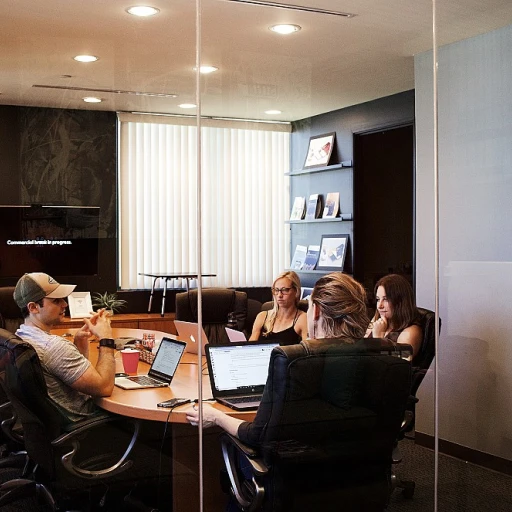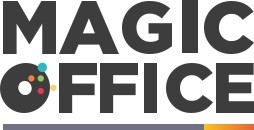
Understanding the Demographics of an Aging Workforce
Demographic Shifts and Their Impact
The UK workforce is experiencing a significant demographic shift, with a growing number of employees nearing retirement age. This trend presents both challenges and opportunities for companies. Understanding the dynamics of an aging workforce is crucial for effective office management. Companies must adapt their strategies to accommodate older employees while maintaining productivity and morale.
Analyzing Workforce Data
To effectively manage an aging workforce, companies need to analyze workforce data, including aging reports and accounts payable. By examining these reports, businesses can gain insights into employee demographics and financial trends. This data helps in planning for future workforce needs and ensuring that payment terms and cash flow are managed efficiently.
Financial Considerations
With an aging workforce, companies must pay attention to financial aspects such as accounts payable and receivable aging. Monitoring these financial metrics ensures that companies maintain a healthy balance between cash flow and financial obligations. It's essential to keep an eye on vendor classes and payment terms to avoid any disruption in operations.
Preparing for the Future
As the workforce ages, companies must prepare for the future by implementing policies that support older employees. This includes adapting work environments and offering training and development opportunities for all ages. By doing so, companies can leverage the experience of older employees while ensuring a smooth transition for younger generations.
For more insights on managing workforce challenges, you can explore understanding unexcused absences in the UK workplace.
Adapting Work Environments for Older Employees
Creating Age-Inclusive Workspaces
As the workforce continues to age, companies must adapt their work environments to support older employees effectively. Ensuring that the physical space is conducive for all ages not only enhances productivity but also showcases the company's commitment to inclusivity.
Adjusting workplaces can involve some straightforward modifications:
- Ergonomic Solutions: Equipping offices with ergonomic furniture can significantly impact comfort and reduce strain for aging employees. Investing in adjustable chairs, desks, and monitor stands could prove beneficial.
- Accessibility: Ensuring that the workplace is easily navigable with ramps, elevators, and clear signage can support employees who might have mobility challenges.
- Flexible Work Arrangements: Implement flexible work schedules to relieve stress and accommodate personal commitments, which can lead to improved work-life balance and overall satisfaction.
Adjusting the workspace is not just about physical changes. Encouraging open communication and involving employees in discussions about workplace improvements fosters a sense of belonging. This approach also helps better utilize the remarkable experience older workers bring to the table, particularly in fields like accounts payable or financial management, where attention to detail and past knowledge are invaluable.
For more insights on creating supportive environments and managing employee attendance, consider checking out our guide on understanding unexcused absences in the UK workplace.
Training and Development for All Ages
Continuous Learning for a Diverse Workforce
In the evolving landscape of UK companies, fostering a culture of continuous learning is crucial, especially with an aging workforce. Training and development should not be limited to younger employees; instead, it should encompass all ages, ensuring everyone can adapt to new technologies and processes. This approach not only enhances productivity but also helps in maintaining a balanced cash flow and financial stability.
Companies should consider the following strategies:
- Customized Training Programs: Develop programs that cater to different age groups, focusing on skills that are relevant to each demographic. This can include digital literacy for older employees and leadership skills for younger ones.
- Flexible Learning Options: Offer online courses and workshops that employees can attend at their convenience. This flexibility is particularly beneficial for those balancing work with other commitments.
- Mentorship Opportunities: Encourage older employees to share their knowledge and experience with younger colleagues. This not only aids in knowledge transfer but also fosters a sense of community and collaboration.
By investing in training and development, companies can ensure that their workforce remains competitive and capable of meeting the demands of modern business environments. This investment also supports the adaptation of work environments for older employees, as discussed in previous sections, by equipping them with the necessary skills to thrive in their roles.
Health and Well-being Initiatives
Promoting Health and Well-being at the Workplace
In today's rapidly evolving work environment, fostering health and well-being is crucial, particularly when considering the unique needs of an aging workforce. Employers must be proactive in promoting a supportive atmosphere that prioritizes the physical and mental health of their employees. Implementing wellness programs can significantly benefit older staff by encouraging active living and stress reduction. Consider offering fitness classes, mindfulness workshops, and ergonomic assessments. These activities not only enhance employee morale but also contribute to reducing absenteeism and retaining experienced talent, thereby maintaining a balanced accounts payable.Financial Insights for Better Health Initiatives
Understanding the financial implications of health programs ensures the company remains sustainable while supporting employees. An aging report can help identify areas for improvement in cash flow—enabling better allocation of resources toward staff well-being. Monitoring accounts payable aging and analyzing specific vendor classes associated with health services provide insights into the cash flow balance. When the company optimizes invoice management, by maintaining open payables and monitoring receivable aging, it can strategically support employee well-being initiatives. By selecting appropriate vendor classes for health services, you establish clear parameters on the management accounts. This attention to financial detail ensures the company offers sustained well-being initiatives without straining operational budgets. Initiatives like flexible credit terms or early payment options with health service vendors may also contribute to a favorable balance in the payable aging categories, assisting both employee health and financial efficiency.Creating a Supportive Environment
Developing a healthy workplace doesn't stop at offering activities; it extends to creating an environment that genuinely supports employees’ holistic needs. For instance, consider setting up spaces dedicated to relaxation and mental health support, leaving no "box empty" in terms of resources allocated to employee well-being. Through these efforts, the company not only fosters a more resilient workforce but also stands as a testimony to robust financial management by continuously aligning cash flow and support services. Leveraging selected aging data and enhancing vendor agreement terms allows for more effective funding of health programs, which benefits the entire workforce, including aging employees. This holistic approach ensures employees remain engaged, healthy, and productive, reinforcing the organizational goals and sustaining financial stability in the long run.Leveraging Experience: Mentorship and Knowledge Transfer
The Role of Mentorship and Knowledge Transfer
In the current workplace landscape, the importance of leveraging the experience of older employees has never been greater. Companies in the UK can gain significant advantages by drawing on the deep well of expertise that aging workforce members possess. This involves establishing structured mentorship programs to facilitate knowledge transfer effectively.
Mentorship not only benefits the younger employees who receive guidance, but it also provides older employees with a sense of purpose and value within the company. As older employees share their experience, they help bridge generational gaps, ensuring the continuity of best practices and operational know-how.
Consider implementing personalized mentorship initiatives where older employees are matched with less experienced colleagues based on relevant criteria. This personalized approach can lead to a more efficient exchange of knowledge, enhancing both employee engagement and company productivity.
Moreover, pairing mentorship with technology adoption can streamline the transfer of knowledge. This also aids in keeping older employees in tune with new systems. Platforms that manage accounts payable, cash flow, and aging reports, for example, can be daunting for those not accustomed to digital tools. Senior staff training focusing on these areas ensures data management remains consistent and accurate. Selecting user-friendly software can make it easier for older employees to manage tasks such as generating aging reports, monitoring open payables, and handling vendor class information.
Companies should also leverage retiree expertise by engaging them periodically for consultancy roles, particularly in areas like payment terms and accounts receivable management. The transition from a full-time role to a consultancy allows retired individuals to offer unique insights without ongoing commitments, maintaining their bond with the company.
In conclusion, mentorship and knowledge transfer should be pivotal aspects of any company strategy focused on maximizing the potential of its aging workforce. These initiatives not only enrich company culture but also preserve the invaluable intellectual assets that seasoned employees represent.
Policy and Legal Considerations
Regulatory and Institutional Framework
Ensuring a smooth integration and support of an aging workforce requires UK companies to pay close attention to current policies and legal considerations. Navigating these aspects can often seem daunting, but understanding the framework is essential in maintaining legal compliance and promoting fair workplace practices.- Analyzing Financial Implications: Consideration should be given to potential financial impacts associated with evolving workforce demographics. Companies should regularly review aging reports and accounts payable data to maintain cash flow and financial stability, which may affect the organization’s capacity to support an older workforce.
- Adhering to Legislation: There are specific laws and regulations designed to protect older employees in the workplace. UK companies must stay informed about these regulations to ensure compliance and integration of fair employment practices. This includes recognizing benefits such as flexible working conditions and addressing any discriminatory practices.
- Vendor and Contract Management: Aging vendors also play a role in the wider picture. Ensuring that vendor management, accounts payable, and payment terms align with both company policy and payments to support services involving older employees is vital. This ensures a balanced financial and operational ecosystem.













